
Lahug: The Vibrant Heart of Cebu City
Discover Lahug, Cebu City's vibrant neighborhood where modernity meets tradition, offering a blend of cultural sites, culinary delights, and natural escapes.
Nestled amidst the bustling energy of Cebu City, Lahug stands as a beacon of both modernity and cultural richness. As one of the city’s most dynamic neighborhoods, Lahug offers an eclectic mix of attractions that cater to every kind of traveler. Whether you're looking to immerse yourself in local culture, indulge in culinary delights, or simply relax in nature, Lahug has something for everyone. From the historical charm of the Taoist Temple to the green expanse of the Cebu IT Park, Lahug seamlessly blends the old with the new. The Taoist Temple, perched on a hill, offers panoramic views of Cebu City and a serene ambiance perfect for reflection. Meanwhile, the Cebu IT Park is a bustling hub of innovation, housing numerous restaurants, cafes, and shops that showcase the best of local and international flavors. For a taste of local life, Lahug’s markets and street food stalls are a must-visit. Here, you can sample traditional Filipino dishes like lechon and sinigang, or try unique local snacks such as 'puso' (rice wrapped in coconut leaves). The friendly locals are always eager to share their stories and recommendations, making every visitor feel right at home. Nature enthusiasts will find solace in the nearby Mountain View Nature’s Park, where hiking trails and picnic spots offer a refreshing escape from the urban landscape. The park’s cool climate and lush greenery provide a perfect backdrop for a leisurely day out with family or friends. Lahug’s nightlife is equally impressive, with numerous bars and clubs offering a vibrant scene for night owls. Whether you prefer a laid-back evening at a rooftop bar or dancing the night away in a lively club, Lahug promises unforgettable evenings filled with fun and excitement.
Local tips in Lahug
- Visit the Taoist Temple early in the morning to avoid crowds and enjoy a peaceful experience.
- Try the local street food, especially in the evening when the night market comes alive.
- For a unique dining experience, explore the restaurants in Cebu IT Park.
- Wear comfortable shoes if you plan to hike in Mountain View Nature’s Park.
- Keep an eye on local festivals and events to experience Lahug's vibrant culture.
Lahug: The Vibrant Heart of Cebu City
Nestled amidst the bustling energy of Cebu City, Lahug stands as a beacon of both modernity and cultural richness. As one of the city’s most dynamic neighborhoods, Lahug offers an eclectic mix of attractions that cater to every kind of traveler. Whether you're looking to immerse yourself in local culture, indulge in culinary delights, or simply relax in nature, Lahug has something for everyone. From the historical charm of the Taoist Temple to the green expanse of the Cebu IT Park, Lahug seamlessly blends the old with the new. The Taoist Temple, perched on a hill, offers panoramic views of Cebu City and a serene ambiance perfect for reflection. Meanwhile, the Cebu IT Park is a bustling hub of innovation, housing numerous restaurants, cafes, and shops that showcase the best of local and international flavors. For a taste of local life, Lahug’s markets and street food stalls are a must-visit. Here, you can sample traditional Filipino dishes like lechon and sinigang, or try unique local snacks such as 'puso' (rice wrapped in coconut leaves). The friendly locals are always eager to share their stories and recommendations, making every visitor feel right at home. Nature enthusiasts will find solace in the nearby Mountain View Nature’s Park, where hiking trails and picnic spots offer a refreshing escape from the urban landscape. The park’s cool climate and lush greenery provide a perfect backdrop for a leisurely day out with family or friends. Lahug’s nightlife is equally impressive, with numerous bars and clubs offering a vibrant scene for night owls. Whether you prefer a laid-back evening at a rooftop bar or dancing the night away in a lively club, Lahug promises unforgettable evenings filled with fun and excitement.
Iconic landmarks you can’t miss
Fort San Pedro
Explore Fort San Pedro, the historic fortress and museum in Cebu City, where Philippine history comes alive amidst scenic views and rich heritage.

Yap-San Diego Ancestral House
Explore the Yap-San Diego Ancestral House in Cebu City, a historical landmark showcasing the rich blend of Filipino and Chinese culture through its preserved architecture and artifacts.
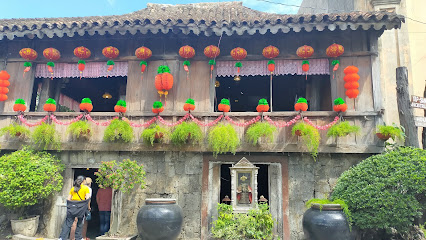
Casa Gorordo Museum
Explore the captivating history of Cebu at Casa Gorordo Museum, a beautifully preserved heritage site showcasing the region's rich cultural legacy.
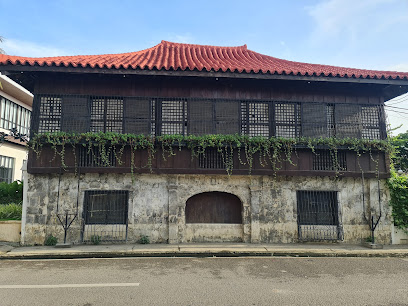
Heritage of Cebu Monument
Discover the Heritage of Cebu Monument, a stunning historical landmark that beautifully narrates the island's rich cultural history through intricate sculptures.

Beverly Hills Lahug Cebu City
Explore Beverly Hills Lahug in Cebu City, a stunning tourist attraction offering breathtaking views, local cuisine, and vibrant culture.
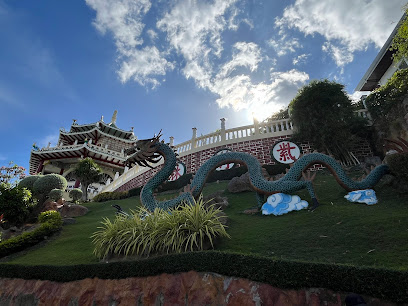
Goddess of Mercy
Discover the serene Goddess of Mercy in Cebu City, a stunning monument that embodies compassion and local heritage, perfect for cultural exploration.

VIBAL Basketan Arcae10
Explore the captivating history and architectural beauty of VIBAL Basketan Arcae10, a must-visit landmark in Cebu City.

Lahug cebu city
Experience the vibrant culture and culinary delights of Lahug, Cebu City - a dynamic neighborhood that blends modern living with rich Filipino heritage.

Sambagan
Discover the historical charm of Sambagan in Cebu City, a landmark that narrates the rich cultural heritage of the Philippines.

Cave used by (Japanese) Soldiers in WW
Discover the historical significance of the WWII cave in Cebu City, a captivating landmark reflecting the struggles of the past amidst breathtaking natural beauty.

Unmissable attractions to see
Magellan's Cross
Discover the rich history of Magellan's Cross in Cebu, a must-visit monument symbolizing the arrival of Christianity in the Philippines.

Temple of Leah
Discover the Temple of Leah, a breathtaking tribute to love in Cebu City, featuring stunning architecture and panoramic city views.

Minor Basilica of the Holy Child of Cebu (Basilica Minore Del Sto. Niño de Cebu)
Discover the spiritual heart of Cebu at the Minor Basilica of the Holy Child, an iconic site of devotion and history in the Philippines, attracting pilgrims and tourists alike.

TOPS Cebu
Experience stunning panoramic views of Cebu City and Mactan Island at TOPS Cebu, a must-visit tourist attraction in the Philippines.

Yap-San Diego Ancestral House
Discover the historical essence of Cebu at Yap-San Diego Ancestral House, a stunning blend of Filipino and Chinese architectural heritage.

Casa Gorordo Museum
Explore the captivating history of Cebu at Casa Gorordo Museum, a beautifully preserved historical landmark showcasing rich cultural heritage.

Heritage of Cebu Monument
Discover the Heritage of Cebu Monument, a captivating tribute to the island's rich history and culture, perfect for history enthusiasts and curious travelers alike.

Beverly Hills Lahug Cebu City
Explore Beverly Hills Lahug in Cebu City: a tranquil tourist attraction blending stunning views and local culture for an unforgettable experience.

Goddess of Mercy
Explore the Goddess of Mercy in Cebu City, a stunning monument that embodies resilience and faith amid the city's vibrant culture.
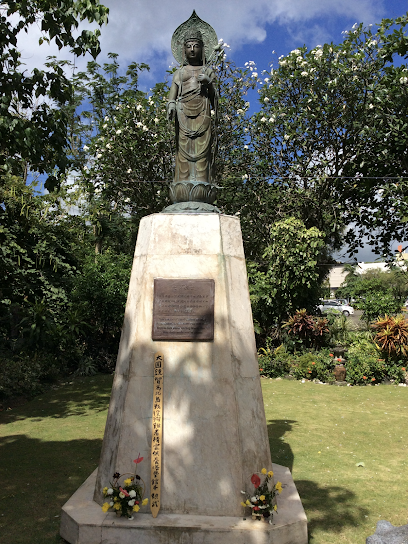
Essential places to dine
Acacia Steakhouse
Discover the rich flavors of expertly grilled steaks at Acacia Steakhouse in Cebu City - where every bite is a celebration of culinary excellence.

The Walk
Discover culinary delights at The Walk in Cebu City - where local flavors meet international cuisine in a vibrant urban setting.
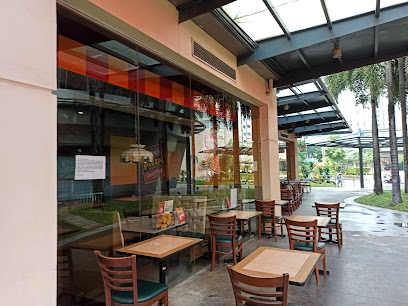
AA BBQ
Experience authentic Cebuano barbecue at AA BBQ - where every bite tells a story of flavor and tradition.

Casa Verde
Discover the flavors of Cebu at Casa Verde, where every dish tells a story and every bite is an adventure.

Anzani New Mediterranean Restaurant
Experience exquisite Mediterranean flavors amidst breathtaking views at Anzani New Mediterranean Restaurant in Cebu City.
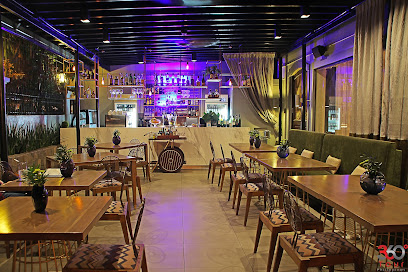
Ambiance Bar & Restaurant
Savor exquisite dishes and crafted cocktails at Ambiance Bar & Restaurant in Cebu City—where modern dining meets vibrant nightlife.

Ori Izakaya
Experience authentic Japanese dining at Ori Izakaya in Cebu City - where tradition meets taste in every dish.

La Maison Rose - The Pink Restaurant
Discover La Maison Rose: A charming French restaurant in Cebu City offering exquisite cuisine and an enchanting atmosphere.

CAVA
Discover the vibrant flavors of Cebu at CAVA, where authentic cuisine meets warm hospitality in a cozy setting.
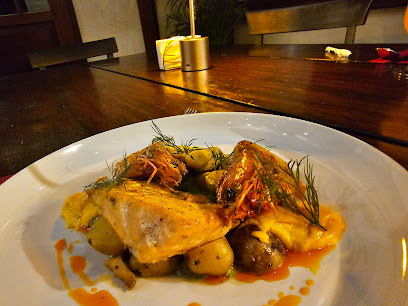
Butchero Dining
Experience the fusion of local flavors and international cuisine at Butchero Dining in Cebu City.

Markets, malls and hidden boutiques
K's Gift Shop and More
Explore a unique gift shop in Cebu City offering exquisite souvenirs, event planning, and creative gift wrapping services.

Metrostyle Concept Store
Explore Cebu City's Metrostyle Concept Store for trendy clothing and a unique shopping experience that reflects the latest fashion trends.

Angel Whisper Gifts & Crafts
Explore Cebu's charm through unique crafts and gifts at Angel Whisper Gifts & Crafts, a treasure trove for every traveler.
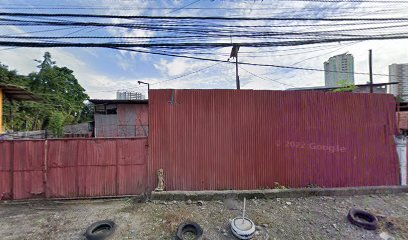
Drop N Shop Specialty Shop
Explore an exquisite selection of wines at Drop N Shop Specialty Shop, a top destination for wine lovers in Cebu City.

A-MMKS BOUTIQUE
Experience the latest trends in women's fashion at A-MMKS Boutique in Cebu City, where style meets affordability.

Pasalubong Outlet
Explore the vibrant Pasalubong Outlet in Cebu City for authentic souvenirs, local delicacies, and a taste of Filipino culture.

Arianna’s Store
Explore unique home goods and handcrafted treasures at Arianna's Store in Cebu City, where local craftsmanship meets modern design.

Jeon's merchandise
Explore a blend of local crafts and modern retail at Jeon's Merchandise in Cebu City, your gateway to vibrant shopping and cultural experiences.

Little A Online Shop
Explore the vibrant fashion scene at Little A Online Shop in Cebu City, showcasing unique clothing and accessories from local designers.

Blossom Thrift Finds Shop
Explore Blossom Thrift Finds Shop in Cebu City for unique, stylish clothing and accessories at unbeatable prices, perfect for every fashion lover.

Essential bars & hidden hideouts
La Vie Parisienne
Discover the culinary delights of La Vie Parisienne, where French elegance meets Filipino flavors in a charming Cebu setting.

Blu Bar & Grill
Experience Cebu's vibrant culinary scene at Blu Bar & Grill, where exceptional grilled delights meet breathtaking city views in a luxurious setting.

Verified Rooftop Bar & Lounge
Discover Cebu's nightlife at this breathtaking rooftop bar and lounge, where stunning views and exquisite cocktails create an unforgettable experience.

G-SPOT Bar
Discover the exciting nightlife at G-SPOT Bar in Cebu City, where great drinks, lively ambiance, and new friendships await you.

Ambiance Bar & Restaurant
Discover the vibrant Ambiance Bar & Restaurant in Cebu City, where exquisite Western dishes meet creative cocktails in a lively atmosphere.

Roof 71 Bistro+Bar
Discover the flavors of Cebu at Roof 71 Bistro+Bar, where breathtaking views meet culinary excellence in a chic rooftop setting.

Trademark Bar, Best Hip-Hop Club, Cebu
Dive into Cebu's nightlife at Trademark Bar, the best hip-hop club where vibrant beats and unforgettable experiences await every visitor.
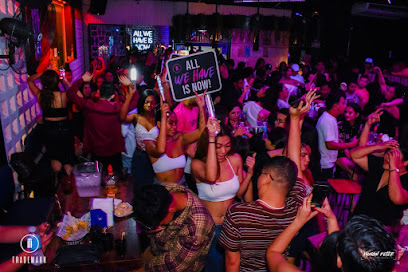
Straight Up Rooftop Bar at Seda Central Bloc Cebu
Experience breathtaking views and vibrant nightlife at Straight Up Rooftop Bar in Cebu, a must-visit for socializing and relaxation.
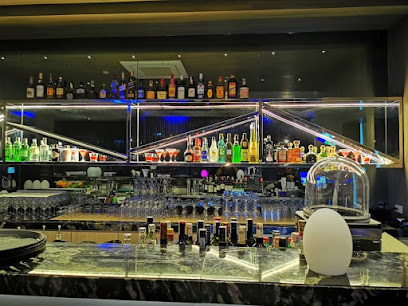
Troy Music and Bistro Bar
Discover the lively spirit of Cebu City at Troy Music and Bistro Bar, where great music and delicious food create unforgettable nights.

Envy Cocktail Lounge & Bar
Discover Cebu City's vibrant nightlife at Envy Cocktail Lounge & Bar, where exquisite cocktails and a chic ambiance await you.
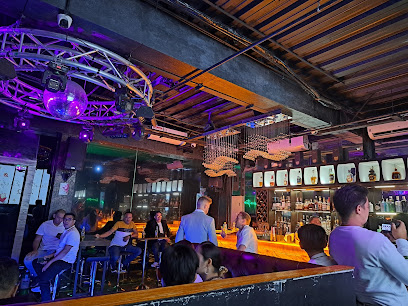
Local Phrases
-
- HelloKumusta
[koo-moo-stah] - GoodbyePaalam
[pah-ah-lahm] - YesOo
[oh-oh] - NoHindi
[hin-dee] - Please/You're welcomeKumusta
[koo-moo-stah] - Thank youSalamat
[sah-lah-mat] - Excuse me/SorryPasensya
[pah-sen-syah] - How are you?Kumusta ka?
[koo-moo-stah kah] - Fine. And you?Mabuti. Ikaw?
[mah-boo-tee. ee-kahw] - Do you speak English?Nakakapagsalita ka ba ng Ingles?
[nah-kah-kah-pahg-sah-lee-tah kah bah ng een-glehs] - I don't understandHindi ko maintindihan
[hin-dee koh mah-een-teen-dee-hahn]
- HelloKumusta
-
- I'd like to see the menu, pleaseGusto ko sanang makita ang menu, pakiusap
[goo-stoh koh sah-nahng mah-kee-tah ahng meh-noo, pah-kee-oo-sahp] - I don't eat meatHindi ako kumakain ng karne
[hin-dee ah-koh koo-mah-kah-een ng kahr-neh] - Cheers!Mabuhay!
[mah-boo-hai] - I would like to pay, pleaseGusto ko sanang magbayad, pakiusap
[goo-stoh koh sah-nahng mahg-bah-yahd, pah-kee-oo-sahp]
- I'd like to see the menu, pleaseGusto ko sanang makita ang menu, pakiusap
-
- Help!Tulong!
[too-long] - Go away!Lumayas ka!
[loo-mah-yahs kah] - Call the Police!Tumawag ka ng pulis!
[too-mah-wahg kah ng poo-lees] - Call a doctor!Tawag ka ng doktor!
[tah-wahg kah ng dohk-tohr] - I'm lostNawawala ako
[nah-wah-wah-lah ah-koh] - I'm illSakit ako
[sah-keet ah-koh]
- Help!Tulong!
-
- I'd like to buy...Gusto ko bumili ng...
[goo-stoh koh boo-mee-lee ng] - I'm just lookingNagmamasid lang ako
[nahg-mah-mah-seed lahng ah-koh] - How much is it?Magkano ito?
[mahg-kah-noh ee-toh] - That's too expensiveMasyadong mahal
[mah-syah-dohng mah-hahl] - Can you lower the price?Pwede mo bang babaan ang presyo?
[pweh-deh moh bahng bah-bah-ahn ahng preh-syo]
- I'd like to buy...Gusto ko bumili ng...
-
- What time is it?Anong oras na?
[ah-nawng oh-rahs nah] - It's one o'clockAlas-uno na
[ah-lahs-oo-noh nah] - Half past (10)Alas-diyes y medya
[ah-lahs-dyehs ee med-yah] - MorningUmaga
[oo-mah-gah] - AfternoonHapon
[hah-pohn] - EveningGabi
[gah-bee] - YesterdayKahapon
[kah-hah-pon] - TodayNgayon
[ngah-yohn] - TomorrowBukas
[boo-kahs] - 1Isa
[ee-sah] - 2Dalawa
[dah-lah-wah] - 3Tatlo
[taht-loh] - 4Apat
[ah-paht] - 5Lima
[lee-mah] - 6Anim
[ah-neem] - 7Pito
[pee-toh] - 8Walo
[wah-loh] - 9Siyam
[see-yahm] - 10Sampu
[sahm-poo]
- What time is it?Anong oras na?
-
- Where's a/the...?Nasaan ang...?
[nah-sah-ahn ahng] - What's the address?Ano ang address?
[ah-noh ahng ah-drehs] - Can you show me (on the map)?Pwede mo ba akong ipakita (sa mapa)?
[pweh-deh moh bah ah-kohng ee-pah-kee-tah sah mah-pah] - When's the next (bus)?Kailan ang susunod (bus)?
[kahy-lahn ahng soo-soo-nod] - A ticket (to ....)Isang ticket (papuntang ....)
[ee-sahng tee-keht pah-poon-tahng]
- Where's a/the...?Nasaan ang...?
History of Lahug
-
Lahug, nestled in the northern part of Cebu City, has a rich pre-colonial history. It was originally settled by indigenous groups who engaged in agriculture and fishing, taking advantage of the area's fertile land and proximity to the sea. The region was part of the expansive trade networks that connected various islands in the Visayas and Mindanao, facilitating the exchange of goods and culture.
-
With the arrival of Spanish colonizers in the 16th century, Lahug became a focal point for missionary activities. The establishment of the San Juan Bautista Parish in the 19th century marked the area's growth as a religious center. The Spanish influence can still be seen today in the architecture and local customs, as well as in the annual celebrations such as the Sinulog Festival.
-
During the early 20th century, under American colonial rule, Lahug started to experience significant urbanization. The introduction of modern infrastructure, including roads and schools, transformed Lahug from a primarily agricultural area into a more urbanized community. The establishment of the University of the Philippines Cebu in 1972 further solidified Lahug's reputation as an educational hub.
-
In recent decades, Lahug has evolved into a vibrant neighbourhood that reflects the cultural diversity of Cebu City. The area is home to a mix of locals and expatriates, contributing to a rich tapestry of cultural influences. Modern developments, such as the IT Park, have attracted businesses and entrepreneurs, making Lahug a significant economic zone within Cebu City.
-
Lahug has faced challenges such as urban flooding and the impacts of natural disasters, which have tested the resilience of its community. However, local initiatives aimed at disaster preparedness and sustainability have emerged, showcasing the neighbourhood's commitment to preserving its heritage while adapting to modern challenges.
Lahug Essentials
-
Lahug is easily accessible from other neighborhoods in Cebu City. From the city center, you can take a taxi or a ride-hailing service like Grab for a direct route. Public jeepneys labeled 'Lahug' also operate regularly and are a cost-effective option. If you are coming from Mactan-Cebu International Airport, a taxi or Grab service will take approximately 30 minutes, depending on traffic.
-
Getting around Lahug can be done by jeepney, taxi, or by walking, as many places are within a short distance. Jeepneys provide affordable transport options, while taxis and Grab services are convenient for longer distances. Bicycles can also be rented in some areas. However, be cautious of traffic and road conditions.
-
Lahug is generally safe for tourists, but standard precautions should be taken. Avoid walking alone at night in less-populated areas, especially near the IT Park and some side streets. Petty crimes like pickpocketing can occur in crowded areas. It is advisable to stay aware of your surroundings and keep personal belongings secure.
-
In case of an emergency, dial 911 for police, fire, or medical assistance. Local hospitals and clinics are available in Lahug. Make sure to have travel insurance that covers emergencies. For minor health issues, pharmacies in the area can provide over-the-counter medications.
-
Fashion: Do wear light and modest clothing suitable for the tropical climate, especially when visiting religious sites. Don't wear revealing clothes in sacred places. Religion: Do respect local customs; it's courteous to observe silence in places of worship. Public Transport: Do give up your seat for the elderly or disabled. Don't eat or drink on public transport. Greetings: Do greet locals with a friendly smile and a handshake. Don't use overly loud or disruptive behavior. Eating & Drinking: Do try local dishes and drinks at eateries. Don't waste food or be overly critical of local cuisine.
-
To experience Lahug like a local, visit the bustling food markets and local eateries to savor authentic Cebuano dishes. Engage with locals, who are often friendly and willing to share insights about their culture. Don't miss landmarks like the Cebu IT Park, where you can find a mix of modern dining and local flavors. For a unique experience, explore the nearby temples and take part in local festivals if your visit coincides with one.
Nearby Cities to Lahug
-
Things To Do in Bohol
-
Things To Do in Camiguin
-
Things To Do in Cagayan de Oro
-
Things To Do in Siargao
-
Things To Do in Boracay
-
Things To Do in Legazpi
-
Things To Do in Davao City
-
Things To Do in Zamboanga City
-
Things To Do in Tagaytay
-
Things To Do in Puerto Princesa
-
Things To Do in Manila
-
Things To Do in Palawan
-
Things To Do in Angeles City
-
Things To Do in Subic
-
Things To Do in Baguio








